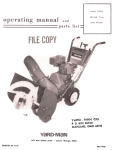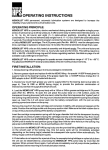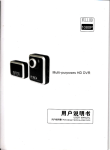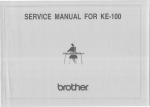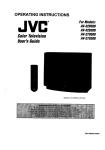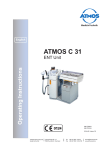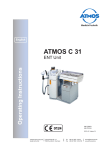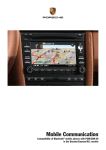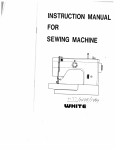Download White 1515 Sewing Machine User Manual
Transcript
3LIHm 3NIHDV1N ONIM3S 9VflNVV’] NOIIDflèLLSNI COMPANY WHITE SEWING MACHINE below the Serial No arid Record in space provided Model No. of this appliance. Ofl Bed Plate. The Serial No. is located on Rating Plate. The Model No. is located Serial No. Model No. reference. Retain these numbers for future IMPORTANT SAFETY INSTRUCTIONS When using an electrical appliance, basic safety precautions should always be folowed, including the following: - Read all instructions before usiAg (this appliance) DANGER To reduce the risk of electric shock: An appliance should never be left unattended when plugged in. Always unplug this appliance from the electric outlet immediately after using and before cleaning. WARNING To reduce the risk of burns, fire, 1 Do not aliow to be used as a toy Close attention is necessary when this appliance is used by or near children. 2. Use this appliance only for its intended use as described in this manual. Use only attachments recommended by the manufacturer as contained in this manual. 3. Never operate this appliance if it has a damaged cord or plug, if it is not working properly, if it has been dropped or damaged, or dropped into water, Return the appliance to the nearest authorized dealer or service center for examination, repair, electrical or mechanical adjustment. 4. Never operate the appliance with any air openings blocked, Keep ventilation open ings of the sewing machine and foot controller free from the accumulation of lint, dust, and loose cloth. 5. Never drop or insert any object into any opening. 6. Do not use outdoors. 7. Do not operate where aerosol (spray) products are being used or where oxygen is being administered. 8. To disconnect, turn all controls to the off (“0”) position, then remove plug from outlet. 9. Do not unplug by pulling on cord. To unplug, grasp the plug, not the cord. DANGER 1. Always unplug before relamping, Replace bulb with same type rated 15 watts. 2. Do not reach for an appliance that has fallen into water, Unplug immediately. 3. Do not place or store appliance where it can fall or be pulled into a tub or sink. Do not place in or drop into water or other liquid. SAVE THESE INSTRUCTIONS WARNING 1. Keep fingers away from all moving parts. Special care is required around the sewing machine needle. 2. Always use the proper needle plate. The wrong plate can cause the needle to break. 3. Do not use bent needles. 4. Do not pull or push fabric while stitching. It may deflect the needle causing it to break. 5. Unplug the sewing machine when making any adjustments in the needle area, such as threading needle, changing needle, threading bobbin, or changing presser foot, etc. 6. Always unplug sewing machine from the electrical outlet when removing covers, lubricating, or when making any other user servicing adjustments mentioned in the instruction manual. 7. Never operate on a soft surface such as a bed or couch where the air openings may be blockedL- - CONTENTS Name of Parts . 1 & 2 Accessories 3 Before sewing (Power supply and Sewing lamp) 4 Take out extension table, free arm sewing 5 Winding the bobbin 6 Removing bobbin case and bobbin 7 Inserting bobbin into bobbin case 7 Inserting bobbin case nto shuttle race 8 Threading upper thread & Twin needle threading 9 Drawing up bobbin thread 10 Changing sewing cirections 10 Leveling machine & Adjusting thread tension 11&12 Regu1gheprertootpresure 13 Drop feed 13 Changing needle 14 Fabric. Thread. Needle table 15 Sewing (pattern selector) and operation table 16 To start sewing 17 To finish seam 18 Straight stitch 19 Zigzag sewing 19 Overcasting 20 Stretch stitch 20 Blind stitch Button sewing Binding 21 & 22 23 23 Zippersewing 24 Button hole sewing 25 Hemming 26 Twin Needle Embroidery 27 27 Quilter 28 Seam guide 28 Maintenance (Cle.3ning and oiling) 29 Checking Performance Problems WHAT TO DO 30 NAME OF PARTS (FRONT VIEW) 1 Pattern selector dial 2 Take up lever 3 Thread tension dial 4 Presser foot 5 Shuttle cover 6 Extension table 7 Spool pins 8 Top cover 9 Stitch length dial 10 Reverse button 11 Thread guide for upper threading (REAR VIEW) Bobbin winder spindle Bobbin winder Stop Face cover plate eedle clamp screw Presser foot lever —2— ACCESSOR I ES 0 Felt Bobbin Zigzag foot Button hole foot (On machine) Button foot Machine Oil Zipper foot F Button hole cutter Screw driver Needle i1 —3—. #14 BEFORE SEWING 1. Fit the machine plug into the machine. 2. Plug the machine to the power supply. 3. Sewing speed can be varied by the speed controller. 1. Remove or install bulb from inside of face cover. 2. Open face cover in direction of arrow. 3. Remove bulb by unscrewing it counter clockwise. 4. Install a new bulb by screw ing it in clockwise. 5. Use a screw type bulb with 120V/15W. (Max) —4— REMOVING EXTENSION TABLE 1. Hold the left end of table direction and pull out in of arrow. FREEARM SEWING 1. Especially useful when sewing sleeves, pants leg, tubular fabrics etc more easily. 2. To sew tubular just slip the sleeve or pants leg on the free arm as shown above. 3. This sewing machine can be used as a flat bed machine, but easily converts to free arm machine by removing the extension table. _ WINDING THE BOBBIN 1. Release stop motion knob. 2. Thread as shown. 3. When bobbin is filled, tighten stop motion knob. Push bobbin winder spindle in direction of arrow. When bobbin winding is com return sindIe to pleted original position. = ::m ff 1 When bobbin winding is in correct, release the screw of upper thread guide and ad just up or down until bobbin winding is balanced. —6— REMOVING BOBBIN CASE AND BOBBIN Hinged latch 1 Raise needle to its highest position and open the shuttle race cover. I - 2. Open hinged latch of bobbin case and pull bob bin case out of machine. th htf’h k,-k bin will fall out easily. INSERTING BOBBIN INTO BOBBIN CASE 1. Pull off 5cm of thread from bobbin and insert it into bobbin case as shown. J 10cm 2. Guide the end of thread into slot. Tension spring 3. Pull Into slot and under tension spring and draw out about 10 cm of thread. —7— INSERTING BOBBIN CASE INTO SHUTTLE RACE 7, 1. Raise needle to its highest position, pulling thread to the front, open the latch of bobbin case and hold it. nsert 2. Holding latch open, place bobbin case onto centre pin in shuttle and release latch —8— THREADING UPPER THREAD —9-- DRAWING UP BOBBIN THREAD 1 Hold upper thread with left hand, turn the hand wheel slowly towards you until the needle goes down and comes Then stop the hand up. wheel when the takeup lever is at its highest position. Lightly draw up the upper thread will be brought up in a loop. 2. Pull out both threads and presser foot to the rear of machine. CHANGING SEWING DIRECTIONS 1. Lower needle down into fabric and 2. Put down presser foot and raise presser foot, pivot the fabric start to sew. around the needle to change direction as desired. —10— LEVELING MACHINE DOWN up —11— ADJUSTING THREAD TENSION Correct Fabric Weak Upper thread Strong Bobbin thread Upper thread tension may be adjusted by turning the thread tension dial. . Inside of fabric Upper thread Lower thread tension can be adjusted by turning screw on bobbin case slightly to the right (clock-wise) to increase tension. (Anti-clockwise) to the left to decrease tension. —12— REGULATING THE PRESSER FOOT PRESSURE for tight fabrics set lever at 1, set at 1. Push down lever for desired pressure, ind3Ior heavy fabrics 1 2 for medium fjb or difficulty cause poor feeding, skipped stitches, 2. Insufficient pressure may in guiding the fabric. by setting freehand embroidery release the pressure 3. When darning or sewing the lever on 0. - - DROP FEED ‘, 4’ , 1’— A below needle plate for darning, Push feed lever down to drop feed embroidery, and button sewing. B. ab6ve needle plate for normal Push feed lever up to raise feed sewing. —13 — CHANGING NEEDLE Flat face side away from you. 1. Raise needle to its highest position. 2. Loosen neeaie clamp screw and remove old needle. 3. With the flat side of the needle facing away from you, insert needle as far up as it will go. 4, Tighten the needle clamp screw securely. —14— __ _______ ___________ NEEDLE TABLE FABRIC •THREAD list is a guide when sewing different fabrics. Please note that th foliowng essureof 00t Needle Thread F a hr c hIeg Light Tricot iL Si k bOS Fiberj — ‘ 13 SOs i7:j 14 50S.Fiber Wool silk Silk Ging ham 6080 Cotton ii14 0.5 — 4 3 05 rhin Jerse’ 60 S. Fibei 11 Gabardine 50 Silk Heavy Denim 50 cotton 1416 Jersey SOS. Fiber 1 1 -14 Twd5014 — 15— 0.5 fl — 3 0.5 — / 0) Twin Needle 6 Freehand Embroidery Button Hole Straight Stretch Stitch Slant Overedge Thread step-Zigzag Stitch Blind Hem_- Zig-Zag Straight Stitch Iii <_> except buttonhole — - Stitch Patterns 5 4 - I 1 Stitch No i:j:i , • [J _.i j[ 1 fl]., 4 0. 3 iTl:;J Necessary Not ‘ r\.. .EEJ: % • Stitch Length Presser Foot A j L Drop feed SEWING (PATTERN SELECTOR) AND OPERATION TABLE -.J c) (31 I L I I < — -- —r 11 L) - Cl) m I lI 2 -o ————- //A\V/A\\ h;i4 -a VVV J]’ -1 -4 m 2 C’, m m I C, -I 0 2 0 -o m IJ*±±I iI -.— —- —— > -4 0 2 -4 w r m ‘ — —-. —.- —- -- TO START SEWING Important Hints. 1. Raise the takeup lever to its highest position when starting and stopping sewing. 2. Hold both threads about 10 cms to the rear of machine for the first two to three stitches. 3. Sufficient fabric should be placed under needle before lowering presser foot. 4. 5. Depress foot/Speed control and start to sew, Test the machine stitches on a scrap of fabric you plan to use, adjusting the machine for the length of stitch and tension suitable to your fabric. 2. vvrenwrruny me nanu wnee manuay, always turn it toward you. Guide the cloth gently with your hand. 3. To prevent breaking needle always stop with the needle out of the fabric. . —17— TO FINISH SEAM 1. Sew to the edge of seam. 2. Push the reverse button and sew in reverse for about 3—4 cms. 3. Raise needie to its highest position. 4. Lift presser foot and pufl out the fabric to rear of machine. 5. Cut threads as shown on the thread cutter. — 18— STRAIGHT STITCH 1. This type of stitching is the one used most frequently. 2. The zigiag presser foot can be used for both straight and zig-zag sewing. 3. For sewing light fabric, use smaller stitch size and left needle position. (Refer to page 15 for dial setting). ZIGZAG SEWING Pattern selector position J Satin stitching can be used for sewing initials, patterns, applique, etc. —19— OVERCASTING Use these stitches for oversewing rough edges. STRAIGHT STRETCH STITCH III III III Use this stitch with knitted, tricot or other stretchy fabrics. The stitch enables your seam to stretch without breaking the thread. It is also a very strong straight stitch for areas under stress. — 20 — BLIND STITCH fjfj 1. Fold fabric as shown. 2, To finish seam as shown. —21 — Adjust width and needle position to obtain correct seam. Needle is not piercing edge of fold at all. Needle is pierces edge of fold too much. (A) (B) Correct seam —22— BUTTON SEWING (Use darning plate see page 11) Icuca. 2. Use button presser foot and attach firmly. 3. Place button between presser foot and fabric and lower presser foot. 4. Manually turn hand wheel towards you ensuring that the needle enters into both holes of button without obstruction. (Increase or decrease width setting). 5. Sew about 7 stitches. 6. Pull both threads to the underside and tie together. BINDING To sew fabrics edge to edge select the multi zig-zag stitch. — 23 — ZIPPER SEWING Select straight stitch. 1. Fold the fabric about 2cm and place fabric under foot. 2. Zipper foot is designed to sew close to a raised edge preventing sewing on zipper. I 1. To sew the left side of the zipper, set the zipper foot on the left side of the needle. 2. To sew the right side of the zipper bring the foot to the right side of the needle. sew as illustrated. —24— BUTTON HOLE SEWING Select stitch length dial in area indicated. Pattern selector dial . Steps - E I Settings 1. Set dial to “1” position. 2. Sew left side. 3. Raise the needle 4. Set dial to “2” position. 5. Sew 5-6 stitches. 6. Raise the needle J (1 7, Set dial to “3” position. a ‘.‘. ?‘VV 9. Raise the needle [ I —_ 10. Set dial to “4” position. 1 1. Sew 5-6 stitches. 12. Raise the needle Cut buttonhole along centre with cutter as shown. Before sewing fit button-hole foot as shown. — 25 — HEMMING Replace the foot with the needle to its highest position. Raise the foot and the hemmer foot. the place it under the foot. Secure edge by about 3mm and 2. Fold over the fabric hem the draw Take out the workpiece and stitches. folded edge with a few thread& into the hei f_ot_bVPk19t 1 - hem. 3. Lower the foot and sew the it to run into the fabric to the left a little and allow 4. Durning sewing, fold the hemmer foot. half of the foot. The does not move under the right 5. Make sure that the fabric the work of the hemmer sufficiently so that fabric must be fed into the scroll groove under the foot. piece edge runs freely through the necessary to acheive and some practice may be Only suitable materials can be used best results. — 26 — TWIN NEEDLE I the same passing both threads through Thread machine as for normal sewing procedure: exceeding this ÷, ehrr1 widest stitch width, will result in breaking of needle. EMBROIDER’S’ (Use darning plate see page 11) slowly to form the desired effect. Lower feed dog and move hooped fabric — 27 — ______Ljpsert _______ QUILTER - %%% supporfqlte 2. Move quilter and adjust stitch distance. SEAM GUIDE of regular 1. Use seam guide when sewing a long seam distance from edge of material, plate, 2. Set guide in hole on bed, at right of needle and adjust distance. 3 Run machine with edge of material touching guide. Position cloth guide at an angle to .‘w a curved seam. — 28 — MAINTENANCE (CLEANING AND OILING) 1. 2. 3. 4. 5. 6. A Raise needle to its highest position. Take out bobbin case. Turn latch knob A as illustrated. Take off shuttle race cover. Take out shuttle hook. Clean and oil shuttle race and hook, then replace in the reverse order. C Cleaning shuttle race (A) Latch knob (B) Shuttle race cover (C) Shuttie hook Open face cover and oil points indicated, Cleaning feed dog — 29 — 0 Puckering Machine Jamming Knocking Noise Breadkin Bobbin Thread Breaking Upper Thread Breaking Needle Fabric not moving PROBLEM - — — — — — — — — — — — — — — — — — — — — — — — -- Reset Regulating sewing fqot pressure. Correct using fabric, needle and thread. Tension too tight Sewing foot pressure too strong. Incorrect using fabric, needle, and thread. Loosen bobbin thread tension. Reset needle. Reth read machine. Clean shuttle. Moving to correct position. Rethread machine. Loosen upper thread tension. Replace new needle. Replace shuttle, or polish off burrs completely. Need oil. Clean shuttle - — -— — — — — - No oil. Dust and thread in shuttle Tight bobbin thread tension, Incorrect setting of needle. Improper threading. Dust and thread in shuttle. Incorrect position of zigzag width dial. Improper threading. Tight upper thread tension. Needle bent. Nicks or burrs on shuttle. ‘— — — — — Feed dog down. Machine not moving. Stitch length dial in 0 position Light pressure on presser foot Incorrect setting of needle Needle bent Pulling fabric. Incorrect using needle, thread and fabric. — CORRECTION Raise feed dog. Moving stop motion. Moving dial to 1 4 Increase pressure on presser foot Reset needle Replace new needle Do not pull fabric. Correct using needle, thread, and fabric. PROBABLE CAUSE — CHECKING 1 P E RFORMANCE PROBLEMS WHAT TO DO




































